In a new letter dated July 10, 2014, The Universal House of Justice has called upon the Baha’is of the world to universally adopt the Baha’i calendar — known as the Badi calendar — effective from the upcoming Naw-Ruz.
Rather than paraphrase or quote certain parts of the letter, I’ve decided it would be best to include this significant and exciting new letter below. The letter can also be viewed on the official website of the Universal House of Justice here.
Dearly loved Friends,
The setting of the sun on 20 March 2015 will signalize the end of the year 171, the close of the ninth Vahid of the first Kull-i-Shay of the Baha’i Era. We call upon the Baha’is of the East and West to adopt, on that auspicious occasion, the provisions that will unite them in the common implementation of the Badi calendar.
In keeping with the principle governing the gradual unfoldment and progressive application of the Teachings, the provisions of the Badi calendar have been set forth over time. The Bab introduced the calendar and its broad pattern of periods and cycles, months and days. Baha’u’llah provided essential clarifications and additions. Aspects were elucidated by Abdu’l-Baha, and arrangements for its adoption in the West were put in place at the direction of Shoghi Effendi, as described in the volumes of The Baha’i World. Still, ambiguities surrounding some Islamic and Gregorian dates, as well as difficulties in the correlation of historical observances and astronomical events with explicit statements in the Text, left certain issues unresolved. When responding to questions concerning the calendar, both Abdu’l-Baha and Shoghi Effendi left these matters to the Universal House of Justice. Of its many features, three require clarification for the calendar’s uniform application: the means for the determination of Naw-Ruz, the accommodation of the lunar character of the Twin Holy Birthdays within the solar year, and the fixing of the dates of the Holy Days within the Badi calendar.
“The Festival of Naw-Ruz falleth on the day that the sun entereth the sign of Aries,” Baha’u’llah explains in His Most Holy Book, “even should this occur no more than one minute before sunset.” However, details have, until now, been left undefined. We have decided that Tihran, the birthplace of the Abha Beauty, will be the spot on the earth that will serve as the standard for determining, by means of astronomical computations from reliable sources, the moment of the vernal equinox in the northern hemisphere and thereby the day of Naw-Ruz for the Baha’i world.
The Festivals of the Twin Birthdays, the Birth of the Bab and the Birth of Baha’u’llah, have, in the East, been traditionally observed according to their correspondence to the first and second days of Muharram in the Islamic calendar. “These two days are accounted as one in the sight of God”, Baha’u’llah affirms. Yet, a letter written on behalf of the Guardian states, “In the future, no doubt all of the Holy Days will follow the Solar calendar, and provisions be made as to how the Twin Festivals will be celebrated universally.” How to satisfy the intrinsic lunar character of these blessed Days within the context of a solar calendar has hitherto been unanswered. We have decided that they will now be observed on the first and the second day following the occurrence of the eighth new moon after Naw-Ruz, as determined in advance by astronomical tables using Tihran as the point of reference. This will result in the observance of the Twin Birthdays moving, year to year, within the months of Mashiyyat, ‘Ilm, and Qudrat of the Badi’ calendar, or from mid-October to mid-November according to the Gregorian calendar.
Next year, the Birth of the Bab will occur on 10 Qudrat and the Birth of Baha’u’llah on 11 Qudrat. With joy and eager anticipation, we look to the upcoming bicentennial anniversaries of the Birth of Baha’u’llah and the Birth of the Bab, in 174 and 176 B.E., respectively, which the entire Baha’i world will celebrate according to a common calendar.
The dates of the remaining Holy Days will be fixed within the solar calendar in accordance with explicit statements of Baha’u’llah, Abdu’l-Baha, and Shoghi Effendi; we have decided to set aside certain discrepancies in the historical record. The dates are: Naw-Ruz, 1 Baha; the Festival of Ridvan, 13 Jalal to 5 Jamal; the Declaration of the Bab, 8 Azamat; the Ascension of Baha’u’llah, 13 Azamat; the Martyrdom of the Bab, 17 Rahmat; the Day of the Covenant, 4 Qawl; and the Ascension of Abdu’l-Baha, 6 Qawl.
Unless specifically abrogated by these new provisions, previous guidance and clarifications pertaining to the calendar and the observance of the Nineteen Day Feast and Holy Days remain binding, such as the beginning of the day at sunset, the suspension of work, and the hours at which certain Holy Days are commemorated. In future, a change in circumstances may well require additional measures.
It will be evident from the decisions delineated that Baha’is of both East and West will find some elements of the calendar to be different from those to which they have been accustomed. The alignment of the dates of the Badi’ calendar with other calendars will shift depending on the occurrence of Naw-Ruz. The number of days of Ayyam-i-Ha will vary according to the timing of the vernal equinox in successive years; the year commencing on Naw-Ruz 172 B.E. will include four such days. A table prepared at the Baha’i World Centre that sets out the dates for Naw-Ruz and the Twin Holy Birthdays covering half a century will be provided to all National Spiritual Assemblies in due course.
The adoption of a new calendar in each dispensation is a symbol of the power of Divine Revelation to reshape human perception of material, social, and spiritual reality. Through it, sacred moments are distinguished, humanity’s place in time and space reimagined, and the rhythm of life recast. Next Naw-Ruz will mark yet another historic step in the manifestation of the unity of the people of Baha and the unfoldment of Baha’u’llah’s World Order.
– The Universal House of Justice
Posted by
Naysan is passionate about using the arts and media to explore the teachings of the Baha’i Faith. Back in 2011, Naysan started up the Baha’i Blog project, channeling his experiences in both media and technology companies to help create a hub for Baha’i-inspired content online.








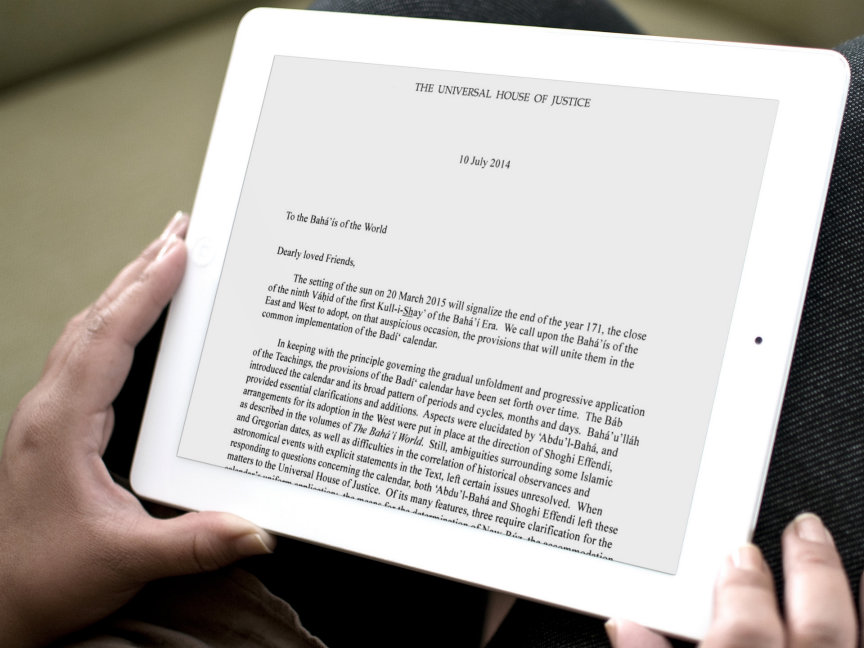


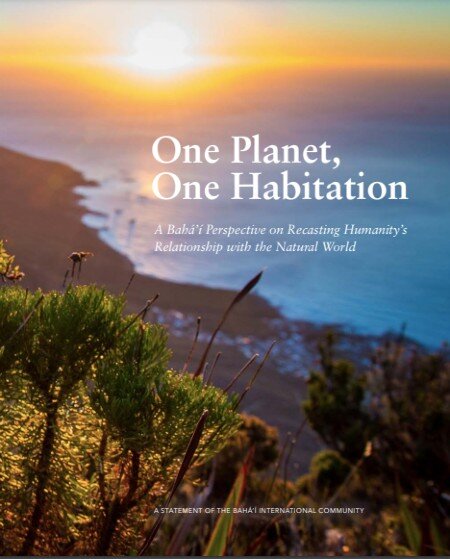
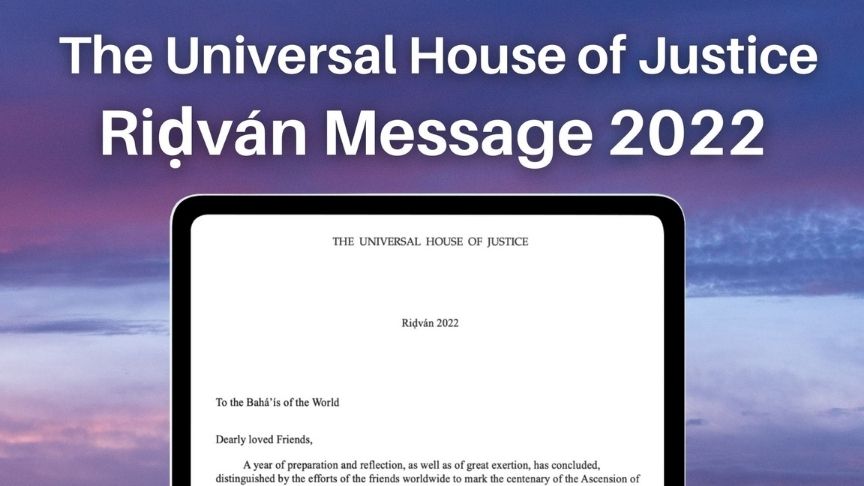

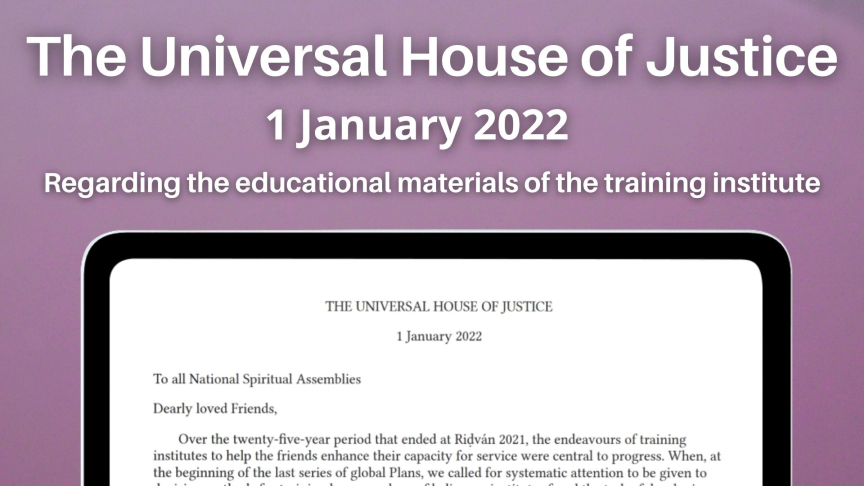
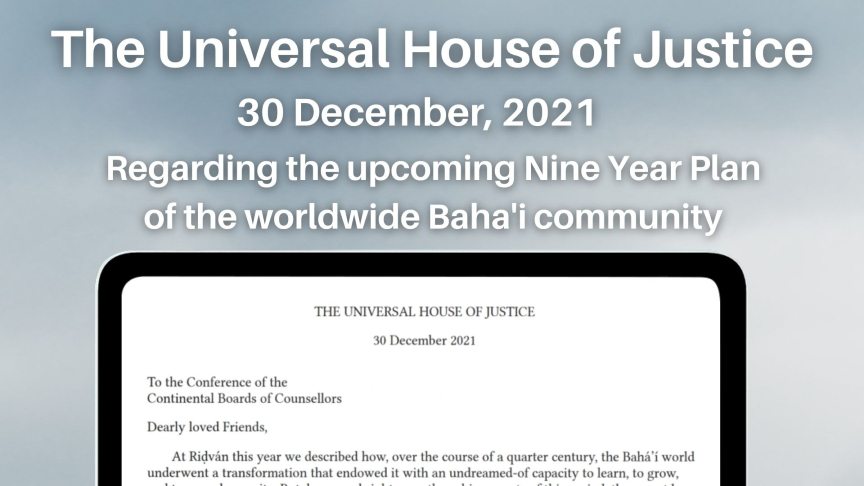
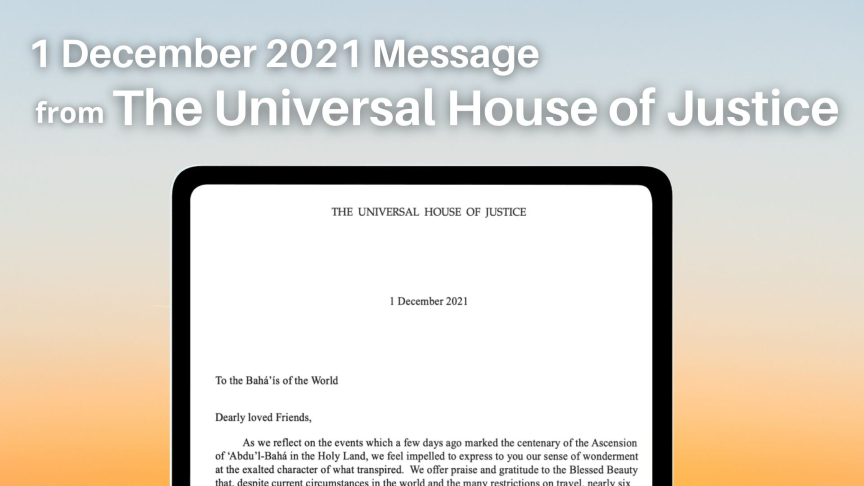























I enjoy looking through an article that can make men and women think.
Also, many thanks for allowing me to comment!
melia (April 4, 2016 at 7:31 AM)